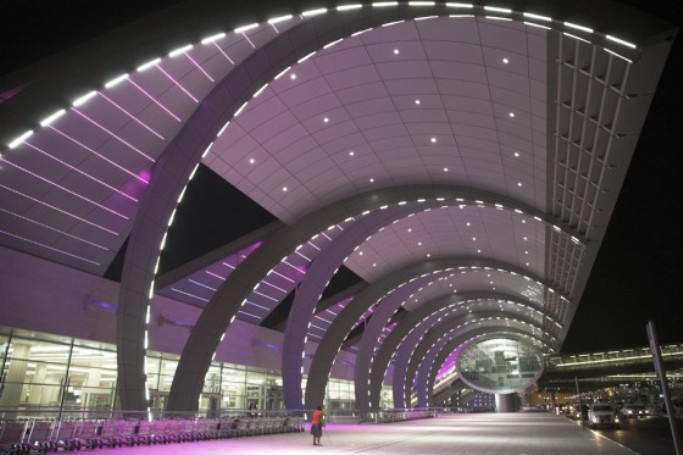 Dubai International Airport (DXB) switched off all non-essential lights across its three terminals for 24 consecutive days to mark this year’s Earth Hour. It’s sister airport, Dubai World Central – Al Maktoum International, located 20 miles south west of Dubai, did the same.
Dubai International Airport (DXB) switched off all non-essential lights across its three terminals for 24 consecutive days to mark this year’s Earth Hour. It’s sister airport, Dubai World Central – Al Maktoum International, located 20 miles south west of Dubai, did the same.
Spurred on by the annual Earth Hour campaign, the airports’ action will save an estimated 300,000kw hours of energy and 129 tons of carbon dioxide emissions. A solid contribution by one of the world’s largest carbon-emitting industries!
Earth Hour took place globally on March 29, but the airports’ operator kicked off compliance early stretching the event to over 3 weeks of green behavior. The shutdown didn’t affect services within the buildings, which begs the question why were so many lights installed in the first place?
Blame the designers, and short-sighted airport operators who place aesthetics above the environment. It’s so easy to do both! (See how Saudi’s Hajj Terminal achieved this over thirty years ago – link here.)
Airports that embrace conservation see an immediate cash payoff. Energy efficiency projects (energy management systems, installing high efficiency lighting and occupancy sensors) have slashed Dubai Airports’ electricity and fuel costs by $4.33 MIL, cut water use by over 130 million gallons, and saved more than 72,000 tons of CO2. A win-win for operational and maintenance budgets and for the planet.
In the US and EU, stringent governmental regulations demand a minimum level of project environmental performance, and robust environmental assessment is compulsive during project planning and permitting processes which are overseen by national environmental authorities. Building codes, typically reflecting internationally accepted standards, mandate minimum energy efficiency characteristics for materials and equipment.
Major new airport terminal projects are underway in Qatar, Kuwait and Saudi, with continued airport expansion in Jordan. But in the Middle East, absent mature environmental agencies with strong governance over large capital building projects, conservation gets fitted into designs only if a designer convinces the client of it’s importance, or if that client is especially savvy to its benefits.
Safe to say it doesn’t happen unless the operator specifically demands it. And they usually don’t, until well after the project is over and the utility bills start to arrive.
Here’s hoping Dubai Airports sets a new trend that embodies an old UK adage: a penny saved is a penny earned. What’s good for an airport’s pockets turns out to be great for the world.



